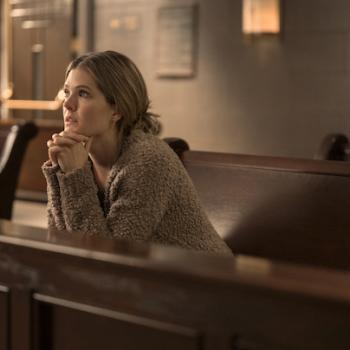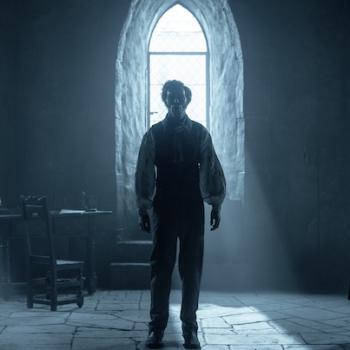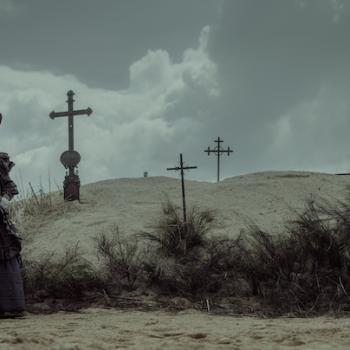 LifeWay Christian Resources recently announced that they won’t be selling any more books dealing with “heavenly tourism.” While they sell incredibly well (Don Piper’s 90 Minutes in Heaven sold 6.5 million copies and will get its own movie this fall), they’re inherently controversial for loads of Christians, who believe such stories are just pure bunk. You don’t just up and leave heaven, they argue, and the Southern Baptist Convention went so far as to caution Christians against such books in 2014.
LifeWay Christian Resources recently announced that they won’t be selling any more books dealing with “heavenly tourism.” While they sell incredibly well (Don Piper’s 90 Minutes in Heaven sold 6.5 million copies and will get its own movie this fall), they’re inherently controversial for loads of Christians, who believe such stories are just pure bunk. You don’t just up and leave heaven, they argue, and the Southern Baptist Convention went so far as to caution Christians against such books in 2014.
I’m no theologian, and far be it from me to say whether the highway to heaven runs both ways. But part of me has always wanted them to be true. I’ve been fascinated with near-death stories ever since I was a kid. I wanted to know what heaven was like—and hell, too. Does the former have pearly gates? Does the latter freeze over? Do angels really just sing all the time, or do they have some intramural sports clubs, too? The Bible is frustratingly elusive on many of the questions I have.
And really, who isn’t fascinated with what lies behind the curtain? J.K. Rowling called death the “next great adventure,” Susan Sontag the “obscene mystery.” Francois Rabelais, a great French writer from the Renaissance, said as he was dying, “I go to seek a Great Perhaps.” I’d imagine that even atheists have an intense curiosity of what those moments before oblivion might look like. And for those who believe that something comes after, we wonder what that “after” looks like. No wonder books like Heaven Is For Real sell so well. We want to know.
But if the Southern Baptists are right and books like that are full of bunk, where are we to get insight from? The movies?
 Alas, heaven—a setting that would be CGI nirvana (so to speak) for some lucky special effects company—rarely shows up on screen. Most of the time, heaven is only hinted at, and then usually via cliché: The ray of sunlight from above, the sound of a three-part angelic choir singing an impossibly high note … these are the signs of some dead guy called Home. Most of the time, heaven looks too bright to see—like what you saw in chemistry class when the teacher set fire to a magnesium strip. Even some stories predicated on heaven itself—like 1978’s Heaven Can Wait or 1991’s Defending Your Life, chicken out and just show way stations or in-between places instead.
Alas, heaven—a setting that would be CGI nirvana (so to speak) for some lucky special effects company—rarely shows up on screen. Most of the time, heaven is only hinted at, and then usually via cliché: The ray of sunlight from above, the sound of a three-part angelic choir singing an impossibly high note … these are the signs of some dead guy called Home. Most of the time, heaven looks too bright to see—like what you saw in chemistry class when the teacher set fire to a magnesium strip. Even some stories predicated on heaven itself—like 1978’s Heaven Can Wait or 1991’s Defending Your Life, chicken out and just show way stations or in-between places instead.
I can think of only a few movies that dare to peer into heaven proper—and one of those movies is South Park, which I don’t know if we should even count.
 What Dreams May Come is the most detailed depiction of heaven I’ve ever seen on screen. The 1998 movie, starring an in-his-prime Robin Williams in a super-serious role—follows his character Chris Nielsen as he reunites with his children in a heaven bathed in perpetual sunrise. It’s a land filled with classic architecture and beautiful forests and looks a little like Rivendell.
What Dreams May Come is the most detailed depiction of heaven I’ve ever seen on screen. The 1998 movie, starring an in-his-prime Robin Williams in a super-serious role—follows his character Chris Nielsen as he reunites with his children in a heaven bathed in perpetual sunrise. It’s a land filled with classic architecture and beautiful forests and looks a little like Rivendell.
The Tree of Life gives us a more simplified heaven—a beach wherein the film’s unnamed protagonist (Sean Penn) is reunited with everyone he loved … and is forgiven for being kind of a twerp sometimes.
 And while both of those cinematic visions are great in their own way, both fall short. Our heavenly movies are like postcards of Yosemite: They do their best, but they can’t quite do the place justice.
And while both of those cinematic visions are great in their own way, both fall short. Our heavenly movies are like postcards of Yosemite: They do their best, but they can’t quite do the place justice.
Maybe that’s why my favorite depiction of heaven isn’t visual at all: It’s Gandalf’s spoken recollection of Middle Earth’s own version of heaven.
“The journey doesn’t end here,” he tells Pippen. “Death is just another path, one that we all must take. The grey rain-curtain of this world rolls back, and all turns to silver glass, and then you see it.”
“What?” Pippen begs. “Gandalf? See what?”
“White shores,” Gandalf says, almost sings, “and beyond, a far green country under a swift sunrise.”
“Well, that isn’t so bad.”
Gandalf smiles. “No. No it isn’t.”
I love that depiction of heaven—a reality beyond the “grey rain-curtain of this world.” It reminds me of C.S. Lewis’ The Last Battle, wherein heaven is a garden that is somehow bigger than the world outside, where the colors seem brighter and the emotions stronger. “All their life in this world and all their adventures had only been the cover, and the title page,” Lewis writes. “Now at last they were beginning Chapter One of the Great Story which no one on earth has read: which goes on for ever: in which every chapter is better than the one before.”
Yesterday, I watched “Severance,” the beginning-of-the-end episode of Mad Men. The episode was bracketed by Peggy Lee’s 1969 hit “Is That All There Is?” Wherein Lee expresses a world-weary resignation over the joys and tragedies of life. “I’m in no hurry for that final disappointment,” Lee says of death.
When I was a kid and imagined heaven, I was worried that it’d be disappointing. What you hear taking place in heaven—the constant singing and worshipping—sounded like one, long church service, and frankly it was all I could do back then to tolerate an hour of church, much less an eternity. And the movie depictions I’ve seen of heaven haven’t helped much.
But now, I like to think of heaven not as eternal church or an eternal rest home or even an eternal family reunion, but a bigger, brighter world—as if our lifetimes were spent in a preparatory womb. We can’t know what heaven is like because we don’t have the ability to understand it, any more than we’d be able to explain the warmth and color and vitality of this one to someone who lives chained in a cave, staring at shadows. It’s not our movies’ fault as much as it is heaven’s itself. I imagine it is, by its very nature, indescribable. Inconceivable. Life cranked to 11.
I’m still intrigued by near-death experiences. And I still like to see how Hollywood imagines heaven. But I know that, to really “get” heaven, I’ll need to actually get there first.













